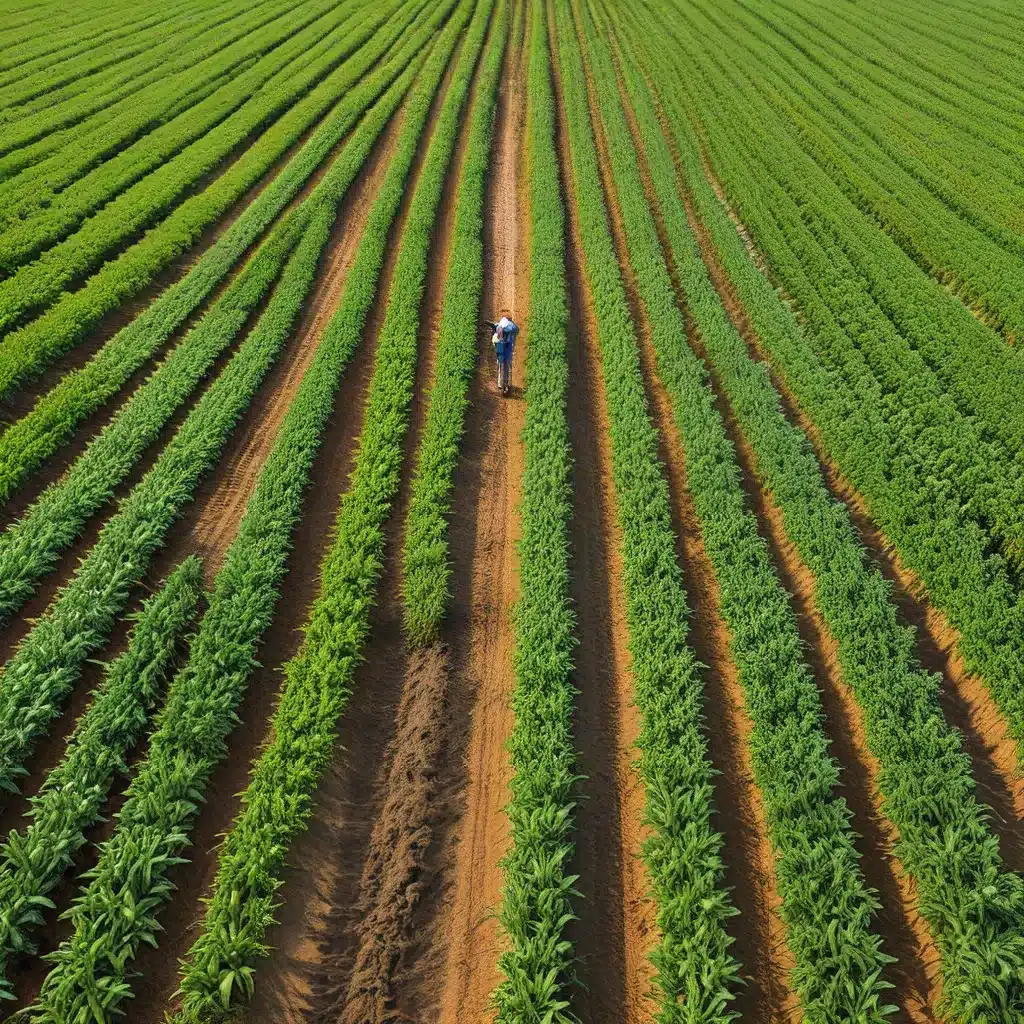
In the ever-evolving landscape of modern agriculture, the proliferation of sensor networks and Internet of Things (IoT) technologies has revolutionized the way farmers and agronomists approach crop management. These advanced systems, equipped with a diverse array of sensors, have unlocked new possibilities for precision farming, resource optimization, and data-driven decision-making.
The Rise of Sensor Networks in Smart Agriculture
The integration of sensor networks into agricultural operations has been a game-changer, enabling real-time monitoring and control of critical factors that influence crop growth and yield. These sensor networks often comprise an interconnected web of environmental sensors, soil moisture sensors, weather stations, and pest detection devices, all of which work together to provide a comprehensive view of the agricultural ecosystem.
Advances in sensor technology have allowed for the development of low-cost, energy-efficient, and highly accurate sensors that can be deployed across vast farmlands. These sensors can measure and transmit a wealth of data, including soil nutrient levels, temperature, humidity, precipitation, and pest activity, enabling farmers to make informed decisions and optimize their resource management.
Precision Farming: Maximizing Crop Yields and Minimizing Waste
One of the primary benefits of sensor networks in smart agriculture is their ability to enable precision farming. By collecting and analyzing real-time data, farmers can tailor their irrigation, fertilization, and pest control strategies to the specific needs of their crops, reducing waste and maximizing yields.
Precision farming techniques empowered by sensor networks can also help mitigate the impact of climate change and environmental challenges. For instance, soil moisture sensors can alert farmers to impending drought conditions, allowing them to adjust irrigation schedules and conserve water resources. Similarly, weather stations can provide early warnings of extreme weather events, enabling farmers to take proactive measures to protect their crops.
Enhancing Resource Efficiency and Sustainability
Beyond optimizing crop yields, sensor networks in smart agriculture play a crucial role in resource efficiency and sustainability. By monitoring factors such as water usage, energy consumption, and fertilizer application, farmers can make data-driven decisions to reduce waste and minimize their environmental footprint.
Sensor-based irrigation systems, for example, can automatically adjust water flow based on real-time soil moisture data, ensuring that crops receive the precise amount of water they need, without overwatering or underwatering. This not only conserves water resources but also reduces the energy consumption associated with pumping and distributing water.
Similarly, sensor networks can help optimize the use of fertilizers and pesticides, reducing the risk of groundwater contamination and soil degradation. By monitoring nutrient levels and pest activity, farmers can apply these inputs with surgical precision, minimizing waste and promoting sustainable agriculture.
Unlocking the Potential of Data-Driven Decision-Making
The wealth of data generated by sensor networks in smart agriculture is a powerful resource that can unlock new levels of strategic planning and decision-making. By leveraging data analytics and machine learning techniques, farmers can gain deeper insights into their operations, identify trends, and make more informed choices about crop selection, planting schedules, and resource allocation.
Moreover, the integration of sensor networks with cloud computing and big data platforms enables real-time monitoring and predictive analytics to support proactive and adaptive management strategies. This allows farmers to anticipate and respond to emerging challenges, such as pest outbreaks or climate-related disruptions, more effectively.
Addressing the Challenges of Sensor Network Deployment
While the benefits of sensor networks in smart agriculture are undeniable, there are also challenges that must be addressed to ensure their successful deployment and long-term sustainability.
One of the primary concerns is data security and privacy. As sensor networks collect and transmit vast amounts of sensitive agricultural data, it is crucial to implement robust cybersecurity measures to protect against data breaches and unauthorized access. This may involve the use of encryption, access controls, and secure communication protocols, as well as the development of comprehensive data governance policies.
Additionally, the energy consumption of sensor networks can be a significant challenge, particularly in remote or off-grid agricultural settings. Energy-efficient sensor designs, renewable energy sources, and advanced power management strategies are essential to ensure the long-term sustainability of these systems.
Finally, the scalability and interoperability of sensor networks are crucial considerations. As the number of connected devices and the complexity of agricultural operations grow, it is essential to develop standardized protocols and open-source platforms that can seamlessly integrate with existing farm management systems and enable scalable deployments.
Conclusion: Embracing the Future of Smart Agriculture
The integration of sensor networks and IoT technologies into smart agriculture has ushered in a new era of precision farming, resource optimization, and data-driven decision-making. By harnessing the power of these advanced systems, farmers and agronomists can maximize crop yields, minimize waste, and promote sustainable practices, all while adapting to the ever-evolving challenges posed by climate change and environmental constraints.
As the sensor network landscape continues to evolve, the sensor-networks.org website serves as a valuable resource for professionals, researchers, and enthusiasts in the field, providing cutting-edge insights, industry trends, and practical guidance on the latest advancements in this dynamic and transformative domain.